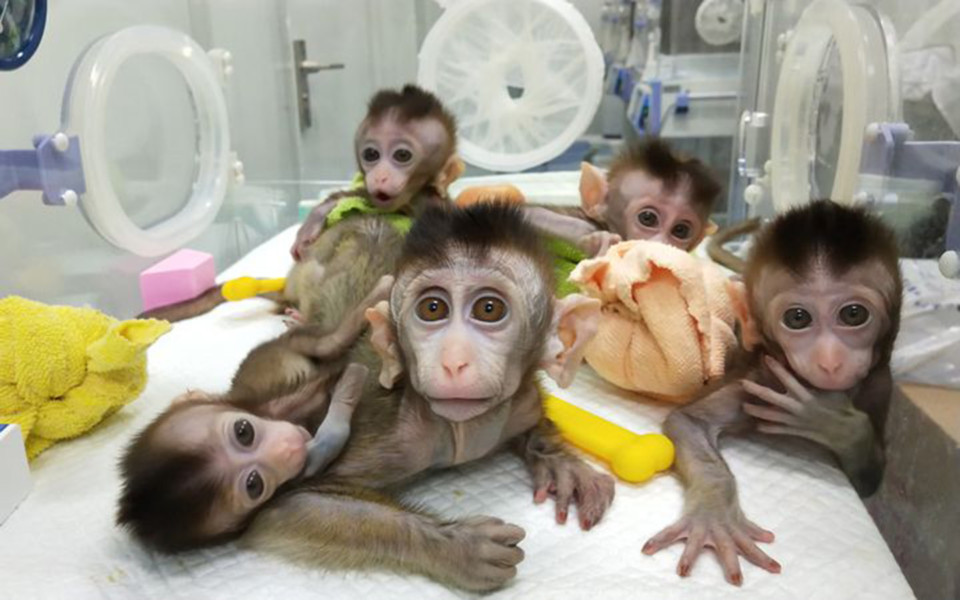China’s CRISPR push in animals promises better meat, novel therapies, and pig organs for people
Early one February morning, researchers harvest six eggs from a female rhesus macaque—one of 4000 monkeys chirping and clucking in a massive outdoor complex of metal cages here at the Yunnan Key Laboratory of Primate Biomedical Research. On today’s agenda at the busy facility, outside Kunming in southwest China: making monkey embryos with a gene mutated so that when the animals are born 5 months later, they will age unusually fast. The researchers first move the eggs to a laboratory bathed in red light to protect the fragile cells. Using high-powered microscopes, they examine the freshly gathered eggs and prepare to inject a single rhesus sperm into each one. If all goes well, the team will introduce the genome editor CRISPR before the resulting embryo begins to grow—early enough for the mutation for aging to show up in all cells of any offspring.
But as often happens when eggs are retrieved, all does not go well. Only one egg in this morning’s batch is mature enough to fertilize. “We were a little unlucky today,” says Niu Yuyu, who with facility director Ji Weizhi runs the gene-editing research. The group can afford a little bad luck, though. Through a combination of patience, ingenuity, and enormous animal resources, the team has already used CRISPR to create an astonishing range of genome-edited monkeys to serve as models for studying human diseases.
Ji, Niu, and colleagues were the first to harness CRISPR in monkeys, as they reported in 2014, and they remain leaders in the field. They’ve built on that success, exploiting CRISPR’s speed and precision to create monkey models of muscular dystrophy, autism, and cancer. In a tie with developmental biologist Yang Hui and co-workers at Shanghai’s Institute of Neuroscience (a branch of the Chinese Academy of Sciences, CAS), they were first to use CRISPR in monkeys to introduce, or knock in, a gene—a particularly difficult feat that the two teams reported in back-to-back papers in 2018 in Cell Research.


